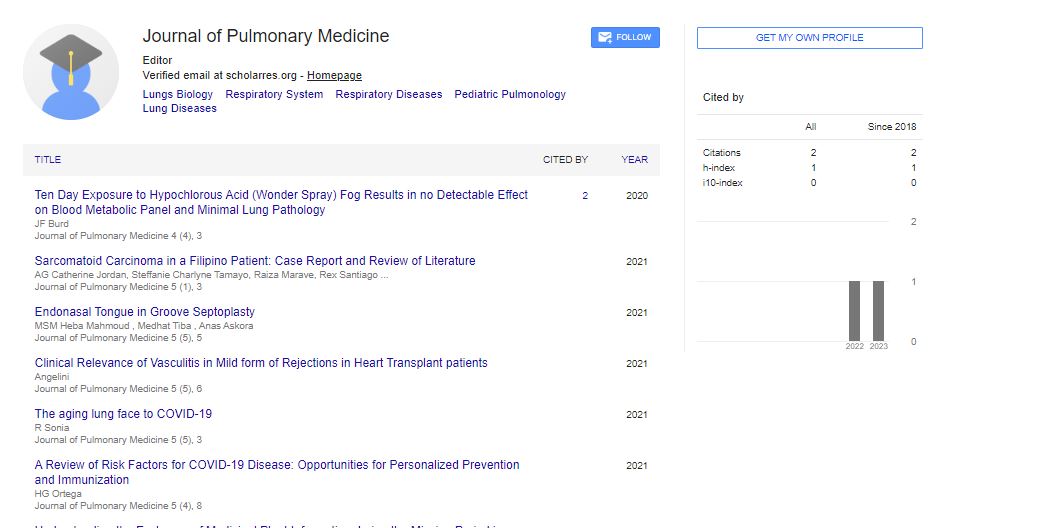Case Report, J Pulm Med Vol: 4 Issue: 1
Descending thoracic aorta to left pulmonary vein fistula associated with mitral regurgitation: A rare combination
Ravi Kumar Baral MBBS, BhagawanKoirala, MD
Tribhuvan University, Kathmandu, Nepal
Keywords: Pulmonary, Aortic Fistula
Introduction
Descending thoracic aorta to left pulmonary vein fistula is a rare congenital malformation. Its association with mitral regurgitation is even rarer. The fistula may pose significant risk of volume overload to the left ventricle and operative hazard during another intra-cardiac procedure. Only few of such anomalies have been reported in the literature.
Case history:
Twenty eight years old gentleman with rheumatic severe mitral regurgitation (MR) was scheduled for elective mitral valve repair. During surgery, after establishment of the cardiopulmonary bypass, aortic cross clamping and opening the left atrium (LA) continuous gush of red blood flooded the left atrium making exposure impossible despite high volume venting of the LA .Search for patent ductusarteriosus was negative. The procedure was abandoned in suspicion of aorta-left atrium fistula. The routine closure of the atrium and the sternum was done. A CT-angiographydone a day after extubation confirmed the suspicion. In CT-angiography, a 7mm fistulous opening was seen arising from the D8 level and connected to left inferior pulmonary vein (fig 1). There was no evidence of any significant pulmonary lesion. Staged closure of the fistula and mitral valve repair was planned. First a left thoracotomy was performed and the fistulous opening from the descending thoracic aorta,which was found at the level of T8, was identified and dissected free. The patient had a fistulous communication between descending thoracic aorta at the level of D8 and left inferior pulmonary vein within 5 mm from its opening into the left atrium (fig 2).It was then doubly ligated and transfixed using polypropylene sutures. The chest was closed with a drain and the patient turned into supine position to address mitral valve.
Mitral valve, on other hand, had mild thickening of the leaflets, commissural fusion with dilated annulus and thickened sub valvular apparatus with central noncoaptation. The mitral valve was repaired with commissurotomy and resection of secondary chords.Ring anuloplasty was performed with Medtronic CG future complete ring size 30 mm. Completion transesophageal echocardiography showed trace mitral regurgitation. The postoperative period was uneventful and the patient was discharged on 5th postoperative day. Follow up CT angiography performed one month after discharge showed no evidence of residual leak from the fistula site. Similarly, trans-thoracic echocardiography done at the same time revealed trace MR only.
Discussion
Congenital aorto pulmonary venous fistula is a rare disease and only few cases have been reported in the literature. The hemodynamic consequence of the fistula is that of a left to right shunt. The volume overload to the left ventricle may cause mitral annular dilatation and regurgitation. On a routine echocardiographic work up of a patient with mitral regurgitation it is almost impossible to think of such a combination. Its combination with rheumatic mitral regurgitation, as was our case, is even rarer. The difficulty of intracardiacexposure after the opening of the left atrium is obvious. Trying to find another source of shunt, apart from Patent DuctusArteriosus, with the left atrium flooded, would be not only impossible, but also risky. We decided to back out safely, and work up the patient further. Contrast enhanced CT angiogram focusing on the descending aorta was done which clearly delineated the pathology (fig. 1). An abnormal fistulous opening from the descending aorta into the lung is often associated with pulmonary sequestration (1). But there are some reports (2,3) in the literature that indicate the possibility of having systemic artery to pulmonary vein without having pulmonary sequestration. The association of such fistula with mitral valve regurgitaion is less clear, although large volume overload may result into annular dilatation valvular incompetence. Large fistulas can, however, present with left heart failure (4). The volume overload to the left side may be the reason for annular dilatation and incompetence of the valve. We have not come across any publication that reports the combination of such a fistula and rheumatic heart disease. We are still unsure of what could have been done to diagnose the fistula before the first operation. While it is logical to say that any turbulence in the pulmonary veins should prompt further investigation, this turbulence may be masked by severe mitral regurgitation. The nature of valve pathology was thought to be rheumatic in origin, which lowered the index of suspicion in our case.
There are number of options for the treatment of the fistula. Percutaneous closure of the aberrant artery using plugs or coils are commonly employed(5,6). Surgical ligation is a method of definitive treatment. We chose to surgically ligate the fistulous track in view of the need for mitral valve repair in our patient.

References
- Flye MW; Conley M; Silver D Spectrum of pulmonary sequestration. Ann Thorac Surg. 1976; 22(5):478-82 (ISSN: 0003-4975)
- Albertini A, Dell’Amore A, Tripodi A, et al. Anomalous systemic arterial supply to the left lung base without sequestration. Heart Lung Circ. 2008 Dec;17:505e507.
- Currarino G, willies katheryn. Congenital fistula between an aberrant systemic artery and a pulmonary vein without sequestration: a report of three cases. J Pediatr. 1975;87:554e557.
- ShebaniSO , Khan MD , Tofeig MA . A congenital fistula between the descending aorta and the right pulmonary vein in a neonate presenting with heart failure .CardiolYoung .2007 ; 17 ( 5 ): 563 - 564 .
- PankajJariwala , G. Ramesh , K. Sarat Chandra. Congenital anomalous/aberrant systemic artery to pulmonary venous fistula: Closure with vascular plugs & coil embolization Indian Heart Journal 66 (2014) 95e103
- KoscecicM .Arteriovenousfistula between descending aorta and left inferior pulmonary vein. Imaging Med. (2016) 8(3)
 Spanish
Spanish  Chinese
Chinese  Russian
Russian  German
German  French
French  Japanese
Japanese  Portuguese
Portuguese  Hindi
Hindi 